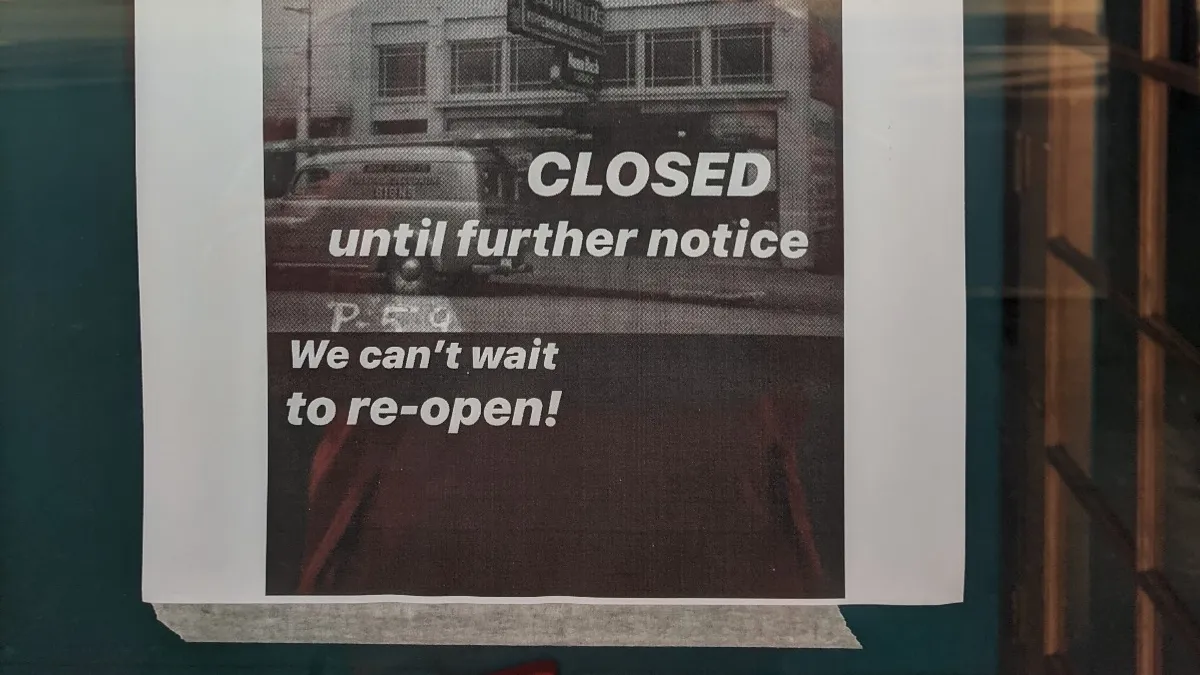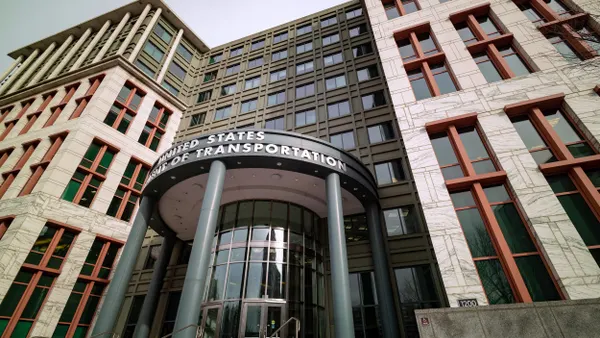Dive Brief:
- The U.S Bureau of Labor Statistics (BLS) found "statistically significant unemployment rate changes" from February to March in 32 states and the District of Columbia, with an average jump of 1%. Eighteen states had rates that were not notably different from February. In an analysis of unemployment data from March 2019 to March 2020, Louisiana saw the largest rate increase (2.4%) with Nevada trailing closely behind (2.2%).
- The BLS notes two federal-state cooperative surveys were used to determine the unemployment data — the Local Area Unemployment Statistics program (LAUS) and the Current Employment Statistics program (CES) — yet the reference periods for both surveys "predated many coronavirus-related business and school closures in the second half of the month."
- In an attempt to help more people keep their jobs, the federal Coronavirus Aid, Relief and Economic Security (CARES) Act created the Paycheck Protection Program (PPP) under the U.S. Small Business Administration (SBA). But funding for that program ran out last week. Lawmakers are now considering a bill to replenish PPP funding.
Dive Insight:
J.B. Hunt has reconsidered growth plans and FedEx Freight issued furloughs as COVID-19 impacts the country and the world. Other transport companies could follow suit, based on the negative outlook experts predict for the industry this year.
Companies dealing in essential freight saw an uptick in loads, but that initial rush has begun to wane. The length of time of the state-by-state lockdowns will have perhaps the greatest impact on soothing fortunes in the industry. E-commerce is also a contributing factor. Amazon has increased worker pay and has opened almost 200,000 new roles to handle surging demand.
But for fleets hauling non-essential items, demand has fallen. Widespread layoffs across industries may dampen consumer spending and in turn further shrink demand.
The PPP received more than 1.6 million loan applications totaling more than $339 billion. A deal to provide another $450 billion in federal relief could come as early as Monday, according to CNN. In that bill, about $300 billion would be allocated to the PPP. The program, however, comes with some caveats. Companies taking part in the plan could jeopardize tax benefits. A more clear picture of who needs to apply for which services should take shape in next month's BLS report.
The national unemployment rate rose to 4.4% in March 2020, compared to 3.8% in March 2019, according to the BLS. While this increase is notable, it does not account for a significant period of time under which cities and states have imposed stay-at-home orders to grapple with the novel coronavirus pandemic.
"We cannot precisely quantify the effects of the pandemic on state and local job markets in March," the BLS wrote. "However, it is clear that the decreases in employment and hours and the increases in unemployment can be ascribed to effects of the illness and efforts to contain the virus."
Next month's report from the BLS will likely indicate a significant spike in unemployment rates. Since mid-March, nearly 13% of the U.S. labor force has sought unemployment assistance, according to The Wall Street Journal. The U.S. Department of Labor registered a record-breaking 22 million initial unemployment claims as of April 16, with most layoffs occurring in the food services, retail trade, information, healthcare and social assistance industries.












